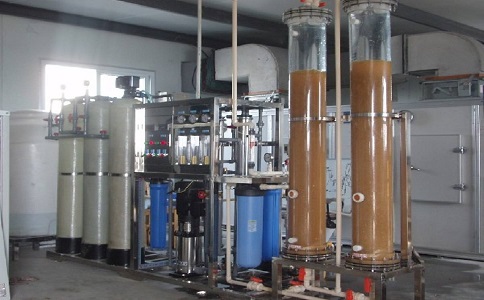成都森格尔环保科技有限公司
Chengdu senge environmental protection technology co.LTD
Consultation Hotline:02865357899
Production, Sales and Development of Ion Exchange Resin
成都森格尔环保科技有限公司
Chengdu senge environmental protection technology co.LTD
Consultation Hotline:02865357899
Production, Sales and Development of Ion Exchange Resin
Contact person: Manager Liu
Location: 028-65357899
Mobile phone: 15680686111
Mailbox: chengdu@sgrhb.com
Fax: 028-65357899
Email: chinaresin@sgrhb.com
Website: www.sgrhb.com
Website : en.sgrhb.com
Address: 79 Jiujin Street, Wuhou District, Chengdu City, Sichuan Province
Method of using ion exchange resin:
1. Pre-selection. The particle size of ion exchange resins is generally controlled at 20-35 meshes, some of which can reach 50 meshes. Therefore, before use, they should be dried, crushed and screened. Usually, they are dried in oven, and can be carried out in a dryer equipped with phosphorus pentoxide, calcium oxide or concentrated sulfuric acid. When crushing, they should not be separated too fine, otherwise the experimental yield will be affected.
2. Pretreatment. Strong alkaline ion exchange resin should be treated with 4% sodium hydroxide solution of 20 times resin volume (converting resin into OH type), then washed with 10 times volume of water, then treated with 10 times volume of 4% hydrochloric acid (converting resin into chlorine type), finally washed with distilled water to neutral, then converted chlorine type into OH type, then chlorine type, and finally treated with 10 times 4% sodium hydroxide solution. When dealing with weak basic ion exchange resin, only 10 times of distilled water can be used to wash, without washing to neutral.
3. Pillar loading. As for the treated resin, the beaker is stirred with water to remove the bubbles. After most of the resin settles, the upper muddy particles are poured out for a few minutes. The column can be installed after repeated operation until the upper liquid is clarified. Attention should be paid to placing 1 cm glass filament at the bottom of the column, flattening it with glass rod, pouring resin into the column, and preventing bubbles.

4. Resin exchange. The sample is prepared into a certain concentration of water solution, which passes through the column at an appropriate flow rate. The sample solution can also be repeatedly passed through the column until the component exchange is complete. Check whether the ingredients are thoroughly exchanged by color rendering method.
5. Resin elution. Attention is paid to the components with weak affinity being washed down first. The commonly used ion exchange resin eluents are strong acid, strong alkali, salts, buffer solutions with different pH, organic solutions, etc. Gradient elution or single concentration elution can be chosen.
Chengdu Senger Environmental Technology Co., Ltd.
Record No: 蜀ICP备19000327号
Powered by Xiangyun Platform
Contact person: Manager Liu
Location: 028-65357899
Mobile phone: 15680686111
Email: chinaresin@sgrhb.com

